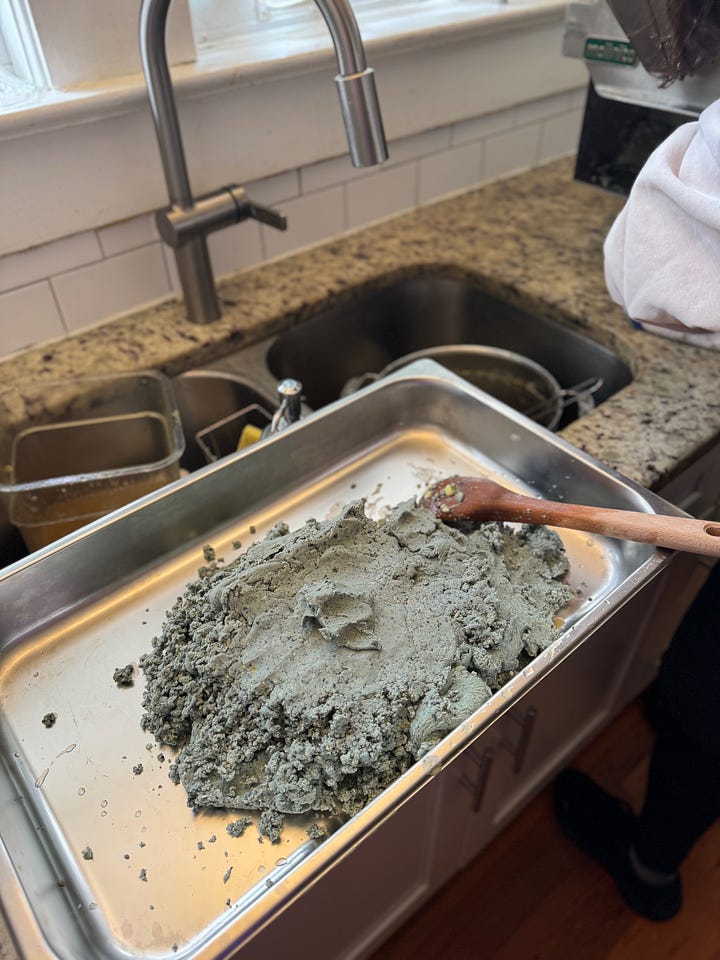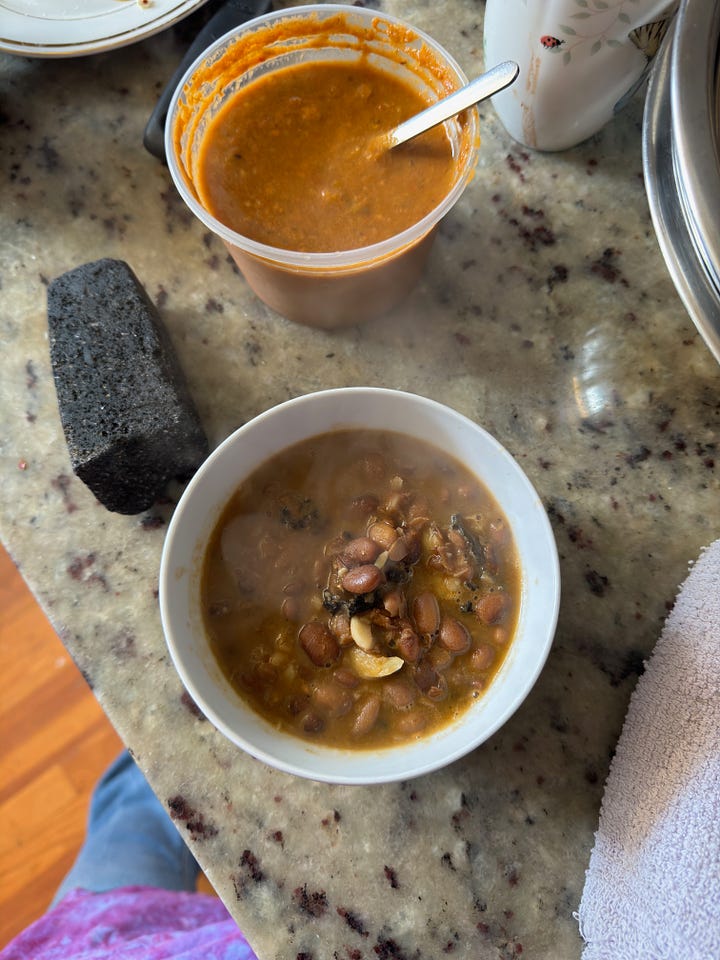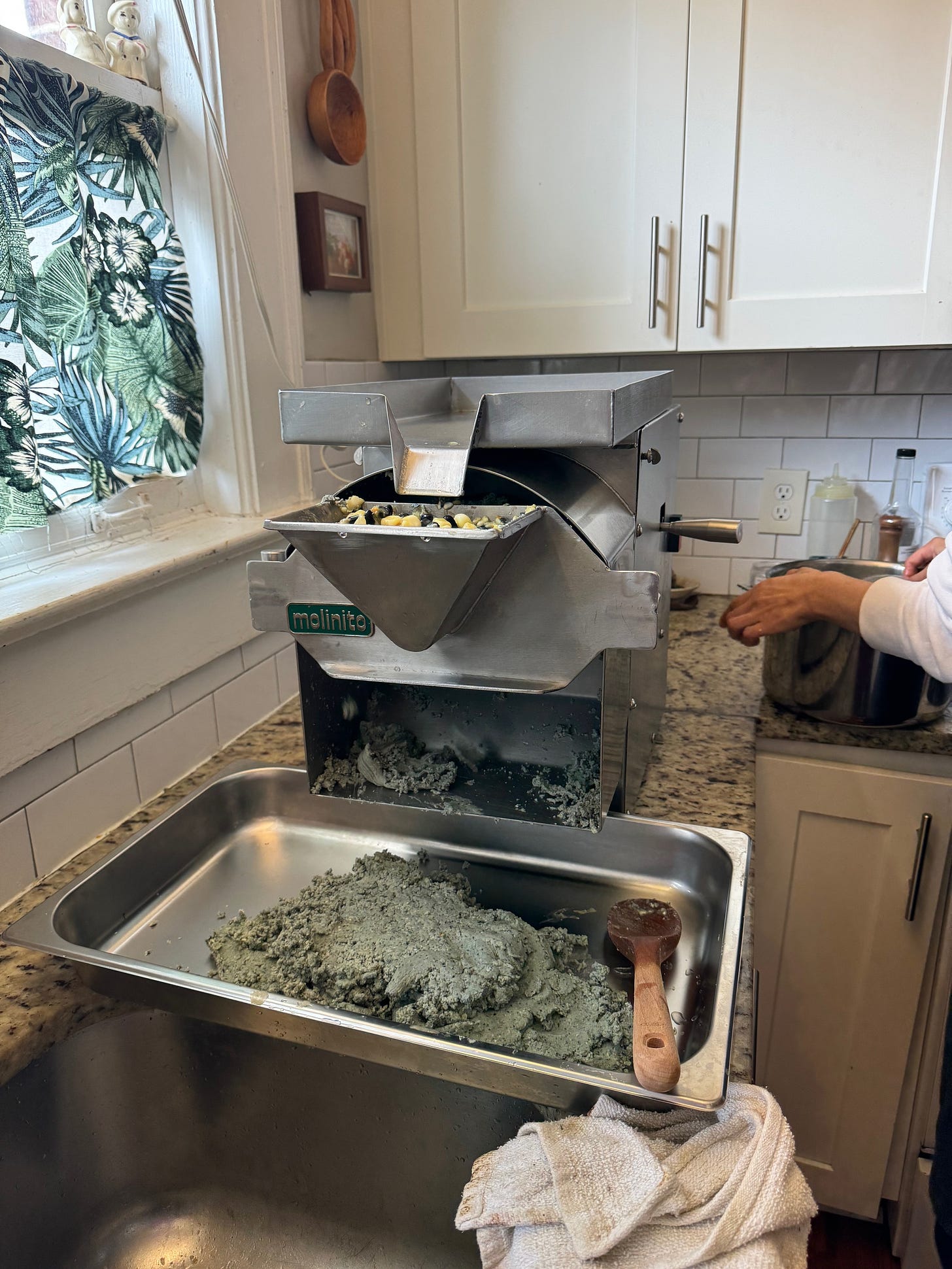Even with all that was going on last week I still felt a little bereft without posting a Letter or recipe. I’m being a bit dramatic perhaps, but keeping a consistent publishing schedule is really for my benefit. Writing this newsletter helps to structure my days, my weeks, my months. Ideally, Monday through Wednesday I’m writing or testing a recipe one final time; Thursday through Saturday I’m on bakery duties. I try to stick to a bakery schedule just as I do with publishing but at times will take on, say a Wednesday cake order if time allows. This is rare though and the few times I’ve gone off schedule have really thrown off the remainder of my week. I may sound precious about my schedule but this consistency is really key to my baseline level of feeling good enough to do my job. My overactive nervous system appreciates the reliablity. I know I’m immensely privileged in this and many ways.
As much as I try and adhere to a schedule, the internet remains a big distraction. I wonder a lot about the relationship between the work that I do and the internet on which I share that work. Bakery orders come in via word of mouth the majority of the time, so much so that I wonder if I even need to be on Instagram, at least as much as I am now. The issue is that I genuinely love to post. I will get more into this in the first essay for my Internet Recipe Culture series, but seeing my thoughts posted to the internet has had a powerful impact. At nearly 40 years old posting on the internet is habitual, but it’s a habit that I’ve been wanting to cut back some. Look for more thoughts on this relationship and the tension that exists therein next week, at long last.
Bakery Life This (Last) Week
When I think of nixtamal in Atlanta, I’m really thinking of Maricela Vega. In December I took an Uber to Fishmonger ATL in the Poney-Highlands neighborhood to meet a couple of internet friends (hello Keia and Victoria) at one of Maricela’s Monday dinners, a series of services she put on the last couple of months in 2023. The dining room was small — too small for someone of Maricela’s local magnitude — but the packed room just contributed to a feeling of intimacy, one that ballooned once I noticed a few of my bakery customers were also in attendance.
Born in southern California and raised in north Georgia, Maricela has built a name in Atlanta and beyond as a respected interdisiplinary artist and chef by focusing on the de-colonization of Mexican food and reminding folks that vegetables have always had a place on the Mexican plate. Most people in Atlanta (and elsewhere, as chef travels for work) know Maricela through her work as executive chef at the beloved but now shuttered 8ARM, events like her Cenas en el Jardín (garden dinners) in the summer of 2021, starting a whole CSA during the first year of the pandemic, private dinners and catering, chef consulting and more.



Pulling up to Mari’s home, I recognized the brick porch from Instagram photos I’d seen. I first became familiar with Mari’s work via Instagram around 2019 through the many local friends we share. I have obviously been inspired by her staunch commitment to sourcing only the best seasonal, local ingredients for her cooking. Last year when I started thinking seriously about making masa harina and learning nixtamal, I knew from whom I hoped to learn. That she agreed to teach me, basically a stranger, is an example of her generous spirit.
Over the span of a few hours, Maricela talked me through a handout she wrote on the history of nixtamal and maíz. I learned what percentage of cal — or calcium hydroxide, which is used in the nixtamal process to cook the maíz and soften the outer hull of the kernel making it suitable and safe for consumption — to add to the total weight of the corn. I learned about her family’s land back in Guanajuato, Mexico which her grandfather tended, that she grew up watching her grandma nixtamal, and how these connections to land and family inform her work.
Using the nixtamal she had previously cooked, then let soak overnight, I watched and took notes as she scooped creamy white and deep blue, nearly purple maíz kernels with a little 8 ounce deli cup, then passed them through the blades of her molino, the machine that grinds the kernels into masa, or dough that’s then used for a myriad of food like tortillas and tamal. She moved around the molino with total ease, like someone who had done this a few thousand times. We chatted like girlfriends, cooked a handful of tortillas to go with the lunch of beans reheated with garlic cloves, chiles, spices and a perfectly fried egg. She sent me off with a small portion of the masa we worked with that day, as well as one of her strawberry plant cuttings she offered to me while we walked through her enormous backyard garden.




Back home, I got to drying out the masa for masa harina. Maricela suggested a dehydrator for the task but I don’t have one yet and I’m impatient, so I went with my home oven at the lowest temp, 175F. Nearly four hours later, the masa was sufficiently dried, filling my whole kitchen with the scent of maíz, the same aroma that so many of my pleasant childhood memories rest on the foundation of. I ran into issues while trying to grind the masa into the powdery substance we know as masa harina, likely because I was using my food processor which seemed to just spin the masa around in circles without doing much in terms of grinding. I’ll have to invest in a flour mill for the future, but the amount of masa harina I was able to grind down was enough for one, maybe two chiffon cake recipes, which I’ll be testing this weekend.


Thanks to Maricela’s graciousness in opening her home and bank of knowledge to share with me I feel set up for success though. I said this in the last Letter but this is an exciting time for the bakery. Using my own hands, time, energy to make masa harina feels like such a step in the right direction for the vision I have for At Heart. Sourcing the ingredients used in your work is of the most importance — it is everything — and I have Maricela to thank for these lessons.
A Favorite Theme This Week
Sharing what you know. Earlier this week I posted an Instagram story asking for advice from other bakers on how to best deal with scaling up a cookie recipe. I’m not worried about the space to house cookie dough — there is plenty now with the bakery fridge. I feel less prepared for the sheer physicality of making over 500 cookies. So I asked for advice and the advice came in:
“Get someone to help you lol” from Becca at Lady Flour in Salt Lake City, Utah made me laugh. Lots of folks suggested making doughs ahead of time and making sure I have more than enough sheet pans.
“Scrape the bottom of the bowl REALLY well!!! Learned the hard way”, an excellent reminder from Jen of Jen’s Pastries PDX.
“this will probably sound counter to what a lot of other people tell you but go a little smaller on the batches than you think you should” from the kind bakers THE PLACE in Camden, Maine, made me realize my instincts about making several smaller batches of dough were correct.
Lots of advice about remembering to mise en place ingredients; a reminder to label the sugar and salt from Jeffery Peterson, cook at Kamayan ATL. “Protect your neck and shoulders by weighing out dough instead of relying on scoops!”, from Vivi Nguyen of Radical Joy Bakery in Chicago.
I really could go on for a while with all the advice and tips bakers shared with me, but I loved how free other bakers were with giving away their knowledge. Between Maricela’s generosity, the advice from helpful bakers, and the offer from my baker friend Jessie to help out with whatever I need for this enormous upcoming bake, I feel — and know that I am — truly supported in the work I’m doing. More than that though, these last couple of weeks have really driven home to me that generosity begets generosity; be free with what you know and watch how it comes back to you.







Love this - I'm getting caught up on your wonderful letters while I eat lunch today (going backwards it seems)
Loved this letter. Nothing like making your own masa. I bought the molinito for my cooking classes and it’s the absolute best. Nixtamal tortillas are another level! Very interesting to see you dehydrated the masa. I will give it a try. How did you like the result? I’m very curious!!!!